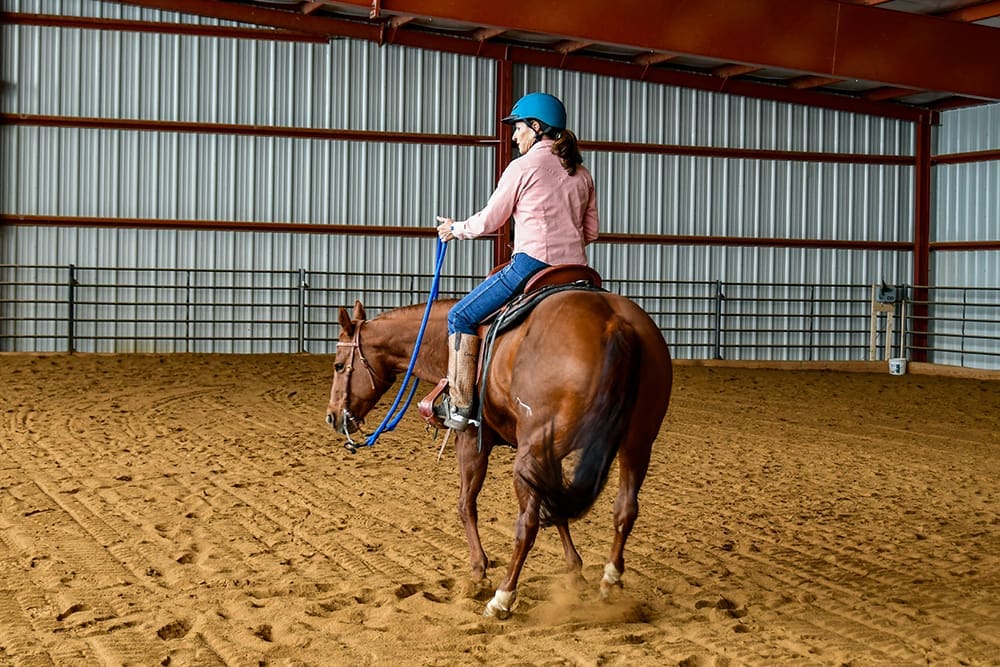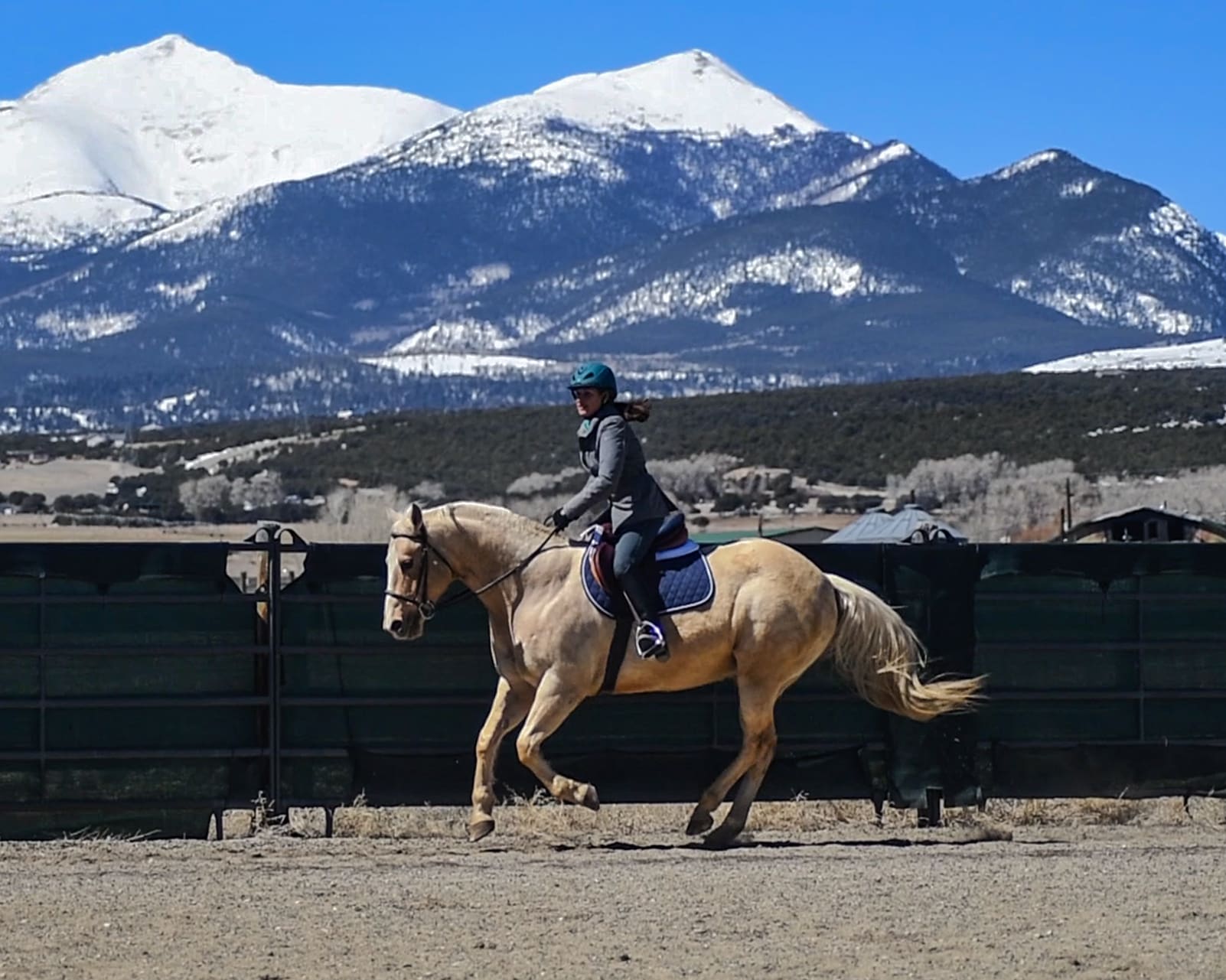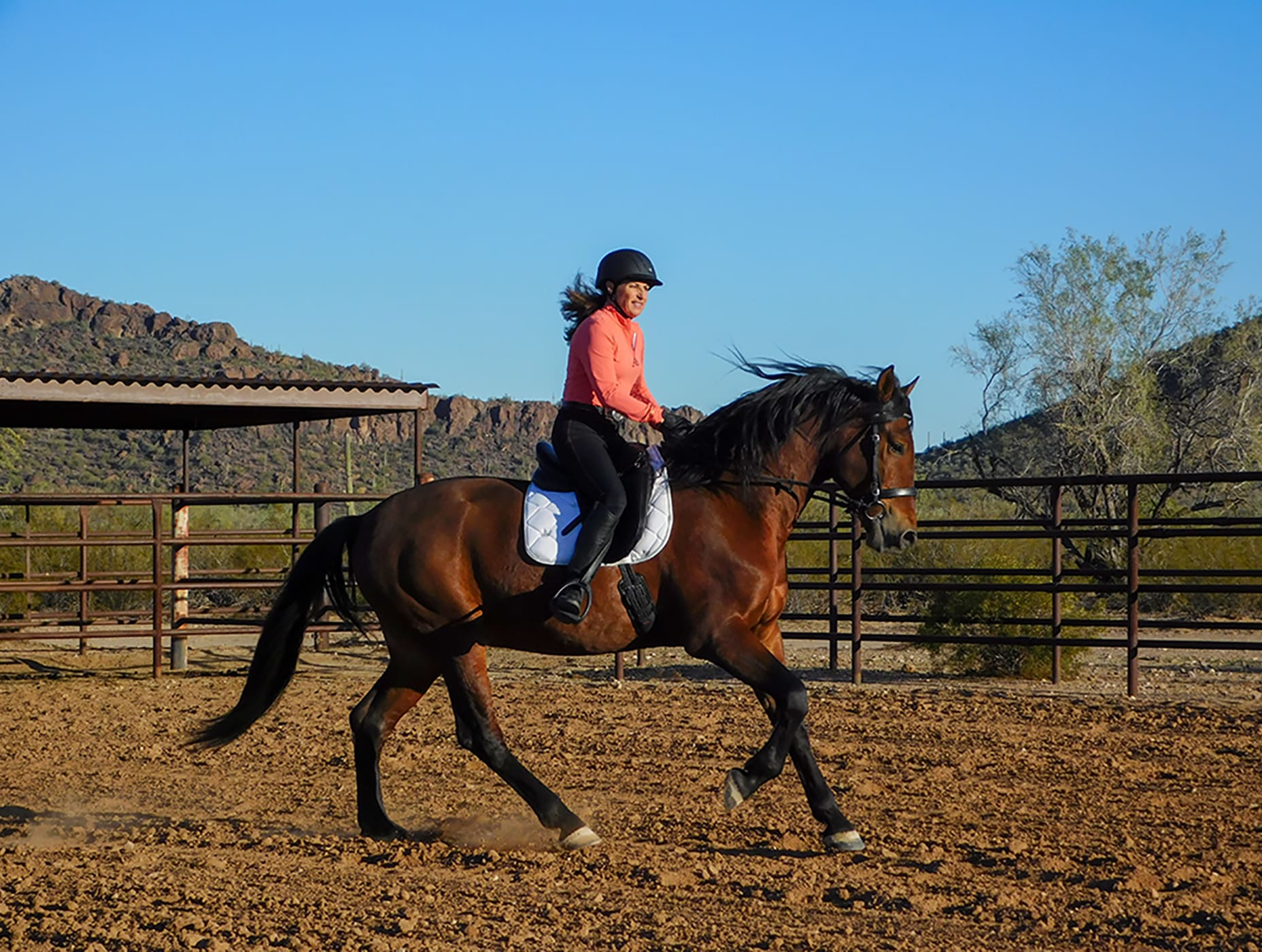
October Blog – No Tricks, Just Good Hands
No Tricks, Just Good Hands: The Leading Rein Explained
This time of year, it’s easy to be tempted by trick or treat. But put down your pumpkin latte for a minute and think about it. Shortcuts and “tricks” to get your horse to turn, stop, or frame up, usually only have fleeting results. In true horsemanship, there are no tricks or shortcuts—only clear communication through feel, timing, and understanding. One of the most important yet often misunderstood rein aids that separates riders who pull from riders who guide, is the leading rein.
The leading rein isn’t a pull to turn or a forced bend—it’s a gentle invitation. Imagine drawing the horse’s nose toward your inside hand as if you’re opening a door, while your seat and legs maintain the forward momentum. That’s the essence of the leading rein. Unlike a direct rein—which involves backward pull on the inside rein, in opposition to the horse’s forward movement—the leading rein keeps the door open as the horse continues forward, smoothly arcing his nose then body into the turn. That’s why the leading rein is so valuable in teaching a horse to stay forward while turning, rather than stiffening the neck, dropping the shoulder, or losing impulsion through the turn.
To execute the leading rein effectively, your hand must be very slow—drawing rather than pulling. Let your inside hand move slowly away from the neck to the inside of the turn, drawing the slack slowly from the rein, inviting the horse’s nose to come toward your hand before the slack comes out of the rein. If his nose follows your hand, he avoids contact. If it doesn’t, and the slack comes out, softly touch contact to the corner of the lip in that moment, in light reinforcement of the turn cue, and release immediately.
If you have good timing and feel on the draw, reinforcement, and release, and you learn to use your hands slowly as you ride the horse through the turn with your seat and legs, the horse will learn to follow your hands in minutes. Sometimes seconds. Remember, a horse is always learning and when he sees the benefit (if I follow the hand with my nose, I can avoid a pull on my mouth), he learns even faster.
The leading rein works best in a snaffle bit, when you’re always riding with two hands and have independent control of each side of the bit. This allows you to guide one side while releasing with the other. A curb bit, on the other hand, may be designed for one-handed use—if it is one solid piece. When the shanks move together, the rein aids are no longer independent.
💡 Sidebar: Clinic Question – “Can I use a leading rein with a curb bit?”
Yes — but only if the shanks of the curb bit articulate (move independently of each other) and it has short shanks (not too much leverage). If it’s a solid, non-articulating bit, you must ride one‑handed and you’ll be using the neck rein to turn. For a full discussion of bits, curb vs. snaffle, and independent rein aids, see this article on my site: “Bit Overview: Direct Pressure vs Leverage”
And if you’re looking for bit options that you can ride two-handed and use the leading rein with, here are two good bits I recommend:
MB‑04 HBT Myler Bit and MB‑33 HBT Myler Bit
—both designed with short shanks and articulation for refined use.
Ultimately, the leading rein is about partnership, not pressure. When used correctly, it builds trust by showing your horse that you’ll always leave the door open—never slam it shut or trap him between stop and go cues.
Watch this month’s short video for a clear understanding of the differences in turning with direct rein versus the leading rein, with a demonstration of the leading rein in action (starting at 5:19): YouTube link.
And if you’d like to deepen your understanding of rein aids, bit mechanics, and feel, visit JulieGoodnight.com for step-by-step training videos and online courses that take the mystery—and the tricks—out of good horsemanship.
Wishing you a fun and safe Halloween—no scary turns, just smooth results and good hands.



